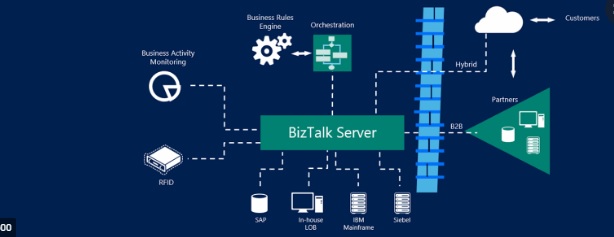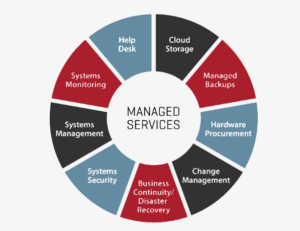
BizTalk Server differs from legacy solutions such as Electronic Data Interchange (EDI) in that it allows for very loosely coupled, long-running transactions that are easily able to respond to changes in the business process. BizTalk Server 2000 is part of the .NET Enterprise Server family, Microsoft’s next-generation platform that controls how users, client applications, tools, and servers will interact in a networked/Internet-based universe.
BizTalk Server 2000 allows organizations to document and then automate their business processes using a set of dynamic, graphical tools. Business analysts are able to work side by side with developers using the BizTalk Orchestration Designer. This tool allows for a Visio-based environment with which an analyst can diagram the business flow that allows the developer to connect the implementations within the diagram.
Everyone knows how difficult it is for different IT applications to interact, communicate and exchange information. However, it is extremely important that modern applications are able to do just that.
As machine-to- machine communication becomes the norm, and users need to stay connected between themselves and with their work and home applications, it is imperative that software is developed to keep the interaction going.
More and more, the IT world is moving towards server-based services.
Software giants like Microsoft have realized long ago the importance of moving towards server-based services and create solutions to cater to these needs.
Microsoft’s enterprise-integration server, BizTalk, was first released in 2000 – it was designed to provide specific solutions to integrate, streamline, manage and automate business processes within or across environments and multiple channels.
BizTalk is still being used today for integrating diverse systems and existing applications – thanks to the server’s adapters that support transport protocols – to connect people and information together and allow business-to-business (B2B) communication and electronic data interchange (EDI) functionality.
Microsoft BizTalk can be used to integrate different applications within a company, or can allow seamless communication between applications belonging to separate organizations.
Biztalk though is more than a way for businesses, or departments of a business, to interact – it’s also a useful tool that allows the automation of business processes
Automating business processes means, for a business, the ability to delegate to the machine tasks that would normally require human oversight. This delivers great savings in terms of time especially, but sometimes of costs as well.
A BizTalk server, for example, can coordinate the ordering of products in a store when the number of available pieces of an item is flagged as having low inventory. Rather than requiring an operator to recognize the shortage and manually initiate the ordering process, BizTalk can help by creating a communication channel between the inventory application and the ordering application.
Following are some of BizTalk’s features that make it a valuable tool for any business.
BizTalk Functionality
• Its Enterprise Service Bus (ESB) toolkit offers the tools to support BizTalk’s dynamic messaging architecture to manage service interactions and orchestrate existing services.
• The service-oriented architecture (SOA) helps organizations with service enablement of existing IT assets and to deploy services faster as it offers cross platform interoperability.
• By using the Business Activity Monitoring (BAM) interceptor API, it’s possible for users not only to monitor workflow, but also to control and streamline processes.
BizTalk Server Services
Through Enterprise Application Integration (EAI), BizTalk can interconnect applications, which can be integrated between organizations by means of BizTalk’s Business Process Management (BPM) solution.
In addition to being able to interconnect software applications, BizTalk offers an advanced sharing platform to run processes across different systems.
BizTalk Operations
• It acts like a hub allowing information and transactions to be interchanged between several different systems. BizTalk enables the systems to interact with one another as it uses a common language to permit easier integration among users.
• It is able to establish a connection between Line-of-Business (LOB) systems using the BizTalk LOB Adapter that enables information to flow across boundaries through Windows Azure and Windows Workflow Foundation applications.
BizTalk Forthcoming
Since 2000, Microsoft went on to release its next version of BizTalk to support its latest platforms for Windows, .NET, SQL Server, and Visual Studio software. BizTalk 2010, the latest release, is still in use today, with the next version of BizTalk Server due to hit the market in the second half of 2013.
It’s always been Microsoft’s strategy, since 2000, for BizTalk to automate, integrate, and simplify business information processing, as well as make it possible for companies to have prevalent methods to exchange data, use other Microsoft applications, platforms, and do business over the Internet.
In a nutshell, BizTalk is the one Microsoft server for business performance management (BPM) to integrate systems, automate and streamline company business processes. It is the one solution that can make interoperability possible.
BizTalk links legacy systems with LOB applications, which can yield impressive cost savings. Additionally, BizTalk can link systems and platforms to enhance communication, improve collaboration and establish the connection to achieve end-to-end messaging, file sharing or any other daily activity in a smoother, more efficient way.






